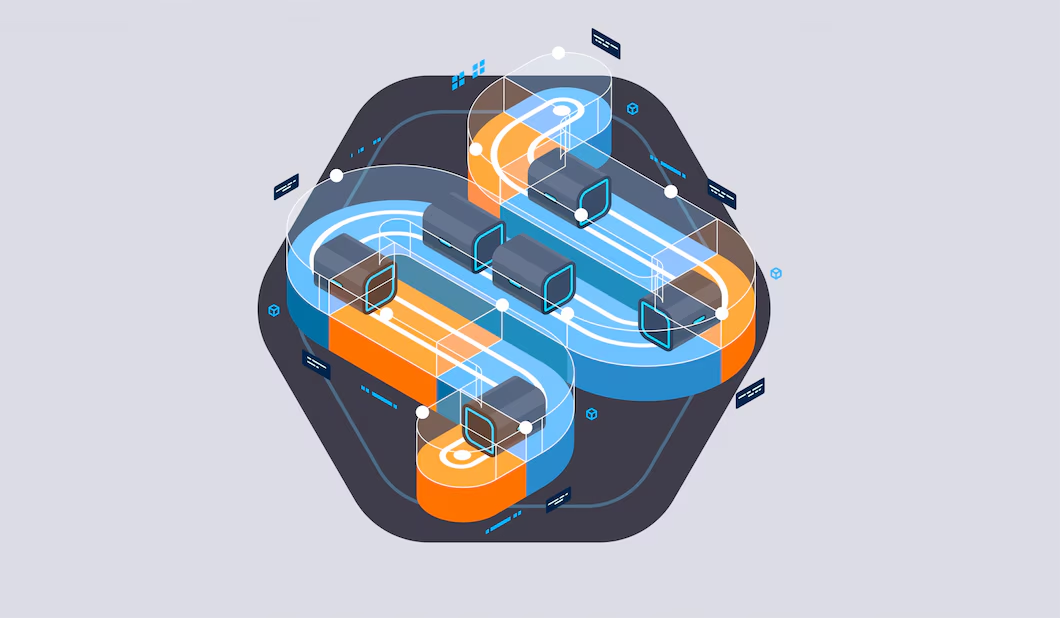The journey of a data pipeline is a crucial process in transforming raw data into actionable insights. A well-structured pipeline ensures data flows seamlessly from its source to the final destination, enabling organizations to make data-driven decisions efficiently. This article outlines the key stages of a data pipeline journey, its importance, and best practices.
What Is a Data Pipeline?
A data pipeline is a series of processes and technologies that automate the movement and transformation of data from various sources to a destination, such as a data warehouse, analytics system, or machine learning model. It ensures that data is collected, cleaned, enriched, and delivered in a structured manner for analysis or use.
The Key Stages of a Data Pipeline Journey
1. Data Ingestion
This is the first step in the data pipeline journey, where raw data is collected from various sources. These sources can include databases, APIs, sensors, or user-generated content.
- Batch Ingestion: Data is collected in chunks at scheduled intervals.
- Stream Ingestion: Data is collected in real-time as it is generated.
2. Data Transformation
Once ingested, raw data is processed and transformed into a usable format. This step involves:
- Data Cleaning: Removing duplicates, fixing errors, and handling missing values.
- Normalization: Standardizing data formats to ensure consistency.
- Aggregation: Summarizing data for easier analysis.
3. Data Storage
After transformation, the processed data is stored in a suitable system, such as:
- Data Warehouses: Optimized for analytics and reporting.
- Data Lakes: Designed for large-scale, unstructured data storage.
- Cloud Storage: Flexible and scalable for various use cases.
4. Data Integration
In this stage, data from different sources is combined to create a unified view. This integration allows businesses to derive deeper insights and make more informed decisions.
5. Data Validation
Ensuring data accuracy and integrity is critical. Validation checks are performed to confirm that data adheres to predefined standards and rules.
6. Data Delivery and Analysis
Finally, the transformed and validated data is delivered to its destination. This could be an analytics platform, a machine learning model, or a business dashboard for visualization.
Importance of a Well-Designed Data Pipeline
Efficiency in Data Processing
A robust data pipeline automates repetitive tasks, reducing manual effort and increasing efficiency.
Data Quality Assurance
By incorporating validation and cleaning steps, pipelines ensure that the data is accurate and reliable.
Real-Time Insights
With real-time pipelines, businesses can respond to changes quickly and make timely decisions.
Scalability
Modern data pipelines can handle growing volumes of data without compromising performance.
Challenges in Building a Data Pipeline
Data Silos
Integrating data from disparate sources can be challenging due to inconsistent formats and standards.
Latency Issues
Delays in processing and delivering data can hinder real-time decision-making.
Security Concerns
Handling sensitive data requires robust encryption and compliance with regulations.
Maintenance Complexity
As systems evolve, maintaining and updating pipelines can become resource-intensive.
Best Practices for Designing an Effective Data Pipeline
1. Start with a Clear Plan
Define the pipeline’s purpose, data sources, and destination before building it.
2. Choose Scalable Tools
Use tools and technologies that can grow with your data requirements. Popular options include Apache Kafka, AWS Glue, and Google BigQuery.
3. Automate Testing and Monitoring
Implement automated tests and monitoring tools to ensure the pipeline runs smoothly.
4. Prioritize Security
Encrypt sensitive data and ensure compliance with industry standards like GDPR or HIPAA.
5. Document and Optimize
Keep detailed documentation of your pipeline and regularly optimize it for performance improvements.
Real-World Applications of Data Pipelines
E-commerce
Data pipelines process customer behavior data to personalize recommendations and improve user experiences.
Healthcare
Hospitals use pipelines to analyze patient records and predict health outcomes using machine learning models.
Finance
Banks rely on data pipelines for fraud detection and real-time transaction monitoring.
IoT (Internet of Things)

Data from IoT devices is collected, processed, and analyzed in real-time through robust pipelines.
Conclusion
A well-designed data pipeline is the backbone of any data-driven organization. By automating and optimizing the flow of data, businesses can unlock powerful insights and make informed decisions. Whether for real-time analytics, machine learning, or business reporting, a robust pipeline ensures data is available, accurate, and actionable.
Investing in the right tools, technologies, and best practices will ensure your data pipeline journey is a smooth and successful one.
FAQs
What is the primary goal of a data pipeline?
The main goal is to move data from its source to a destination while transforming and preparing it for analysis or other purposes.
How do data pipelines handle real-time data?
Real-time pipelines use streaming technologies like Apache Kafka or Apache Flink to process data as it is generated.
Can a data pipeline work with unstructured data?
Yes, modern pipelines can handle unstructured data using tools like Apache Hadoop and data lakes.
What tools are commonly used to build data pipelines?
Popular tools include Apache Airflow, AWS Glue, Google Dataflow, and Talend.
How do you ensure data security in a pipeline?
Data security can be ensured through encryption, access controls, and compliance with regulations like GDPR.











